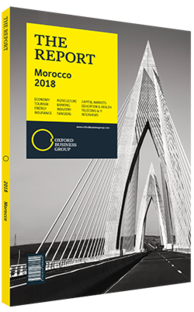Maria Helena Antolin, President, Spanish Association of Automotive Equipment and Component Manufacturers; and Vice-Chair, Grupo Antolin: Interview

Interview: Maria Helena Antolin
What are the major challenges faced by automotive equipment companies in Morocco?
MARIA HELENA ANTOLIN: The transportation of goods remains challenging because the majority of them are quite large and require containers, which as a result makes logistics expensive for car interiors. This is why client proximity is crucial for us, so that parts are not moving back and forth. The only components that are worth being exported from here are small parts, such as sun visors, because they can just be put in a box and easily shipped to central Europe. In addition to logistics, one key challenge is having all the suppliers in one place. The difference with Mexico is that a lot of suppliers, maintenance companies and machines had already been there, while Morocco only started 10 years ago. Even though Morocco is very close to Europe, it is still very expensive to get out of the free zone and cross the Strait of Gibraltar. In Mexico, however, business volumes are a lot bigger because there is great demand just across the border. Nonetheless, Morocco has done a great job over the past 10 years, though there is still plenty of room for improvement.
What makes Tangiers attractive as a manufacturing base for automotive players?
ANTOLIN: Tangiers holds a unique position within the global automotive industry due to its proximity to Europe and its skilled labour force. Even more impressive, Morocco was one of the first countries that did not already boast an established original equipment manufacturer (OEM) in 2005, when Grupo Antolin launched its production of seat covers in Tangiers. This was unusual, as our company normally relies on OEMs already present in the country. In the beginning, financial stimuli, such as value-added tax exemption and the Hassan II Fund, were not really instituted effectively, so Tangiers’ strategic proximity stood out as the major incentive.
At the same time, however, Moroccan automotive ecosystems are still emerging, and it will take some time before the country is able to compete on equal footing with other key manufacturing bases, such as Mexico and India. Even though business volumes tend to significantly differ, about 10-12 plants have been operating in Mexico for many years. It should be noted that Mexico does not only satisfy local market demands, but also exports a sizeable proportion of fully assembled cars, components and automotive equipment to the US.
A similar pattern can now be observed in Morocco, although a merely export-oriented model for a national car industry can cause huge deficits in case import demand plummets. It is therefore pertinent to establish a mixed balance of meeting both local and export demand. The Moroccan ratio, in this regard, is 40% for the former and 60% for the latter. The country used to be more export-oriented, but we have increasingly observed that local market demands are satisfactorily being met.
How would you describe the major transformations currenly taking place in the global automotive industry?
ANTOLIN: The automotive industry is currently facing tremendous technological and infrastructural changes. In the short to medium term, however, a vast range of new technologies cannot yet be properly introduced because financing is quite often lacking. Furthermore, a large amount of infrastructure expenditure – for example, in areas like inroads and painted lines – will be required to adjust to the requirements of autonomous vehicles.
For now, most countries, notably Spain and France, lack the capital to finance this transformation. Spain has extensive expertise in stamping and brings extensive knowledge about the industry. However, if Spain does not do it, France or Germany will do it.
You have reached the limit of premium articles you can view for free.
Choose from the options below to purchase print or digital editions of our Reports. You can also purchase a website subscription giving you unlimited access to all of our Reports online for 12 months.
If you have already purchased this Report or have a website subscription, please login to continue.

